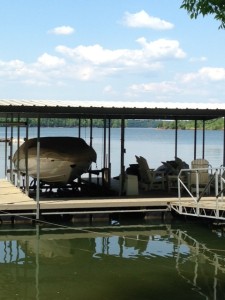It is that time again. The boat and jet skis are in the water. Spring rains are bringing the lake level up to summer pool. With the warmer temperatures, the water in the lake will soon be ready for swimming. Our family will head down to Tim’s Ford Lake every chance we get. For our family and probably most others, the first ones in the water are the kids. To keep them and everyone else safe this summer from electrical shock drowning, refresh yourself on these life-saving safety tips and teach your children the ones appropriate for them:
- If you own a dock, be sure that a licensed electrician who is familiar with NEC and NFPA standards performs all electrical work.
- Have your electrical system checked regularly to ensure the system has not degraded or become faulty.
- Of course, even if your dock is in good working order, electrical current can still leach into the water from neighboring docks, so talk to your neighbors about the risks of electrical shock drowning and ways to prevent it.
- To further protect yourself, install a voltage meter on your dock that will tell you if electrical current is in the water. Before anyone gets in the water, check the meter.
- Ground ladders and other metal parts like boat lifts that are in the water.
- If you feel current in the water (tingling or a shock), do not swim toward the dock. Have someone turn the power off before returning to the dock. If you have been swimming into an area, swim back out the way you came to avoid getting closer to the electrical current.
- If an electrical component is performing oddly, such as a breaker that keeps tripping, do not get in the water until a licensed electrician can inspect the dock and surrounding area.
- Know the difference between a normal drowning and an ESD drowning. An electrical shock drowning victim will experience pain, tingling or numbness. If a swimmer reports these symptoms, do not go in the water. While this is contrary to instinct, remember that many rescuers have died (along with the victim) by trying to help in the wrong way. Instead, quickly turn off the electrical source to the dock. Experts recommend throwing something to the swimmer, rowing out to get them or reaching out to get them. “Reach, throw or row, but do not go.”
- Call 911 and perform CPR until medical help can arrive.
- Do not swim alone and be sure children have adult supervision.
At The Law Offices of John Day, P.C., we have represented the families of drowning victims, and we have witnessed the utter heartbreak that results. As parents and lake lovers, we worry about our own child and we hope we never hear of one of these types of cases ever again. But until better education and training eliminates these types of accidents, we are here to help. We handle all accident cases on a contingency basis so we only get paid if we recover money for you and your family. If you would like to talk to one of our award-winning lawyers, just give us a call at 615-742-4880 (Nashville) or 615-867-9900 (Murfreesboro) or 866-812-8787 (toll-free) for a free, no-obligation consultation.
 Tennessee Injury Law Center
Tennessee Injury Law Center


